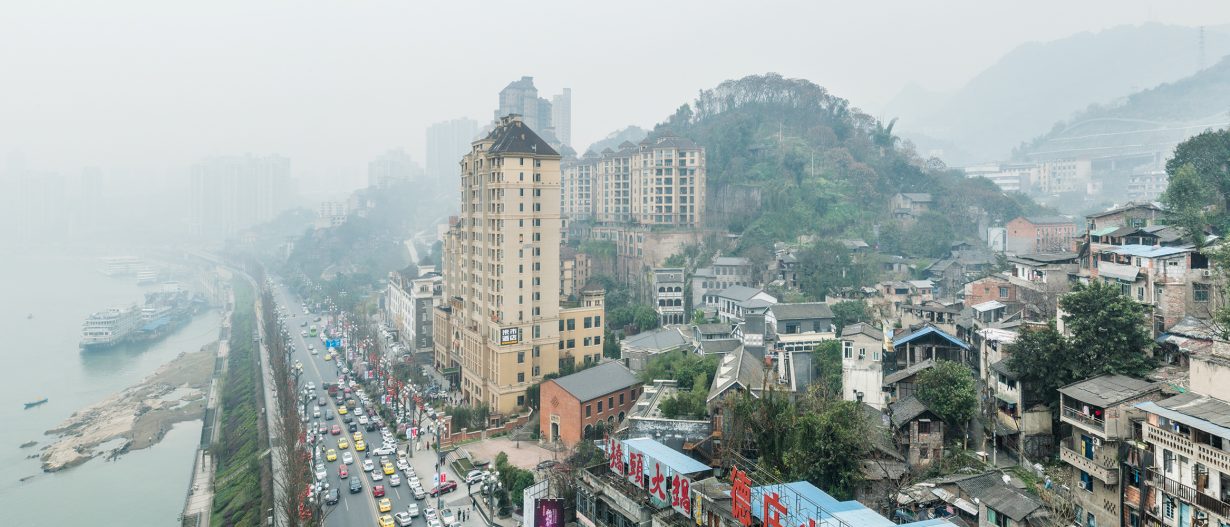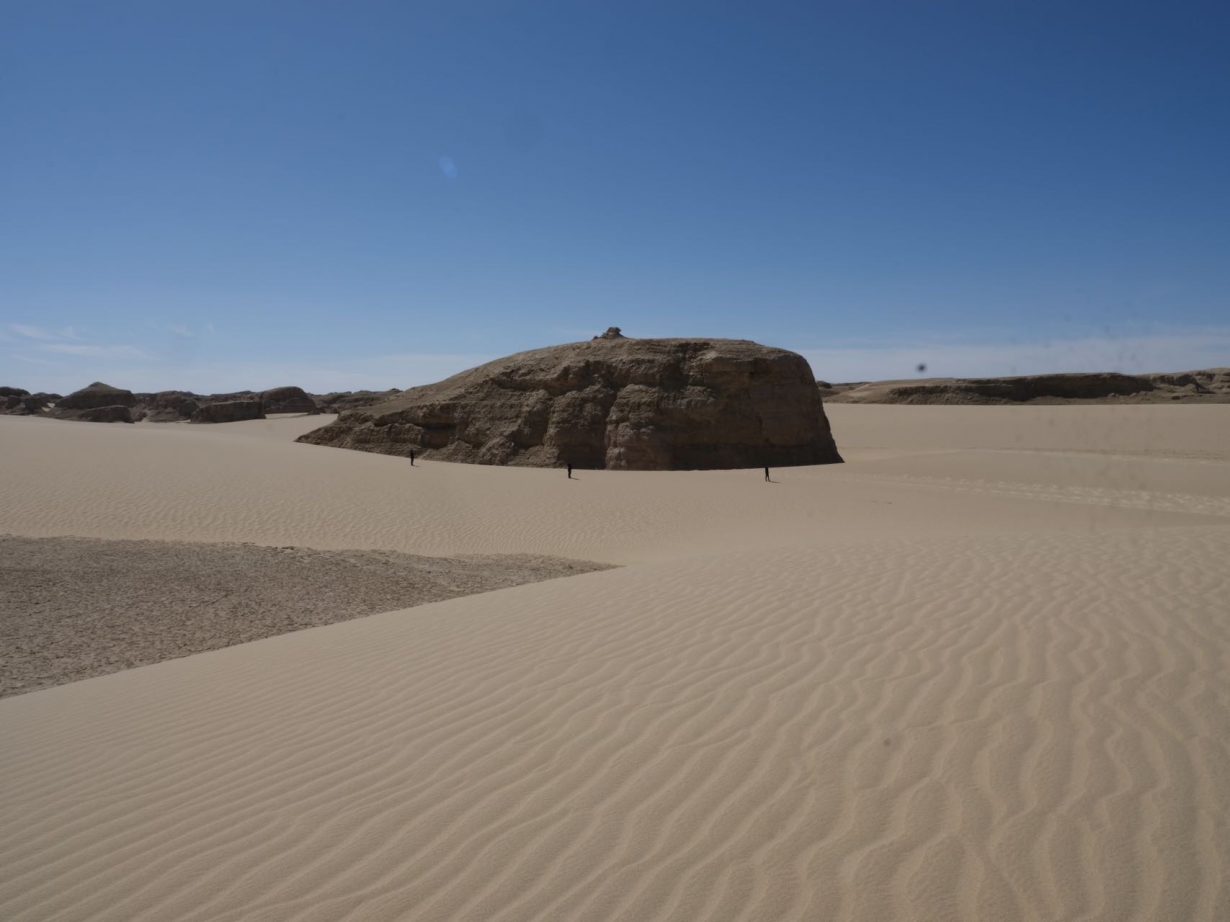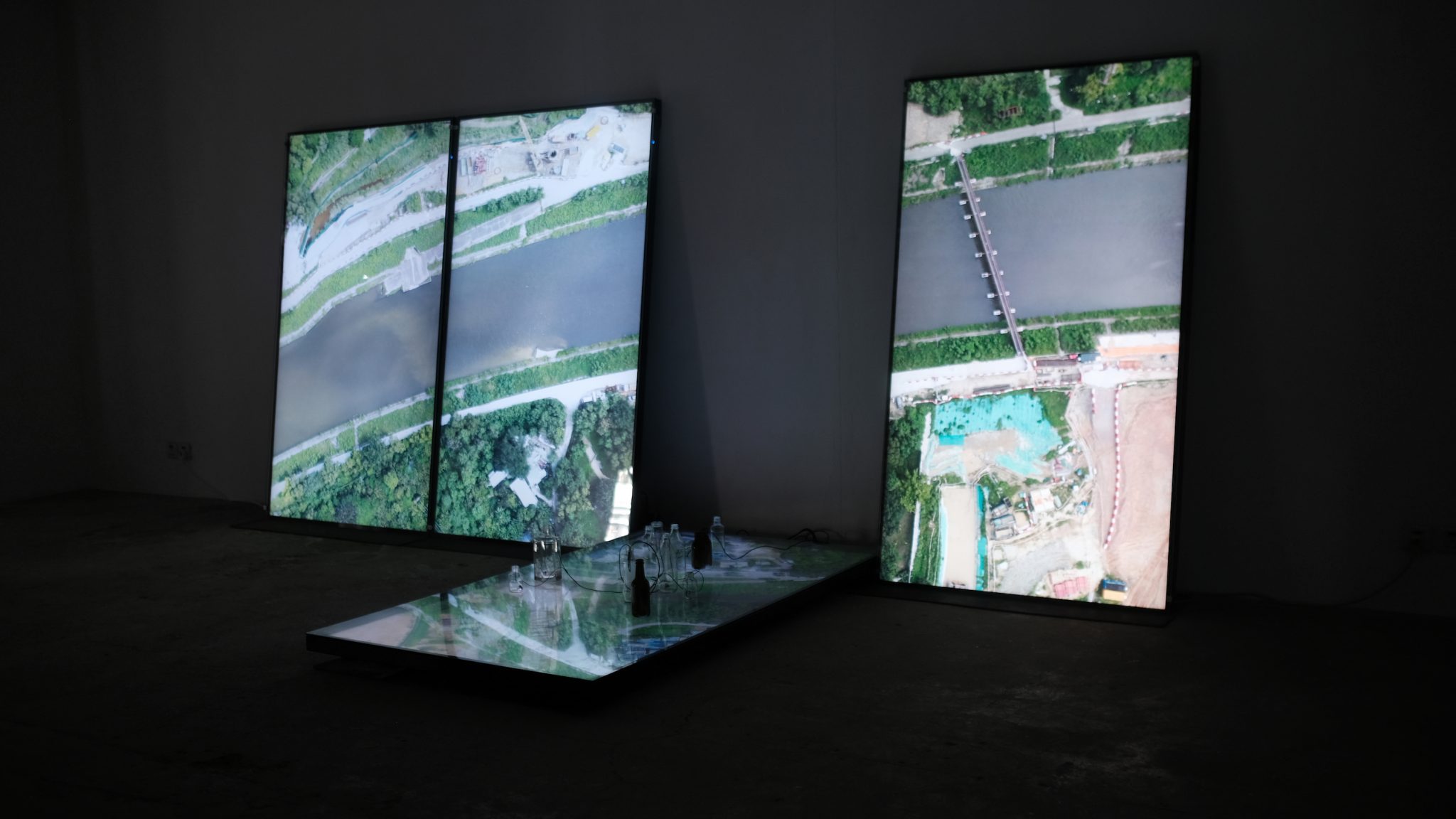A new show at Two Temple Place, London addresses the visible and invisible boundaries that continue to shape our experience of the world
The first piece that one encounters in State-less, a cogent exhibition of moving image and photographic works by East and Southeast Asian artists, is a video by the Vietnamese-American artist Tiffany Chung, best known for her intricate cartographic embroideries and drawings of various geopolitical conflict zones, often reticulated by meandering lines that index the migratory pathways of displaced populations. km 0 – Son’s Story (2017) chronicles the harrowing journey of Son, one of an estimated 45,000 refugees from the Sino-Vietnamese war of 1979, who was only granted asylum in Hong Kong two decades later. Eschewing the granular abstraction of her signature topographies, Chung instead uses a series of Google Map animations, visually rendering Son’s sobering account of perilous boat crossings, deportations and detention with a clean utilitarianism and efficacy that starkly contrasts the innumerable obstacles – geographical, bureaucratic, legal and cultural – that Son and so many others have been forced to navigate in order to be granted the right to remain.
While Chung’s video offers a topical point of departure for the exhibition (State-less happened to open the week UK Prime Minister Rishi Sunak announced his government’s plan to discourage illegal Channel crossings), other works speak to different concerns, the 12 artworks demonstrating the myriad ways East and Southeast Asian artists ‘respond, contemplate, observe and react to the environment they are in’. Curator Ling Tan, of the East and Southeast Asian art collective Kakilang and a trained architect, breaks up the exhibition with a latticework of exposed scaffolding, referencing the ever-changing urban environment of cities in East and Southeast Asia that many of the works address, while also undoing and unsettling the stately grandeur of the site.

This is used to most dramatic effect in the building’s central mahogany staircase, occupied by a five-channel videowork by Hong Kong artist Lo Lai Lai Natalie. The Days Before the Silent Spring (2021) is an ode to the decade-long activities of the Hong Kong farming collective Sangwoodgoon, documenting their environmental activism, sense of community and the challenges of cultivating a sustainable future in the fast-paced metropolis. Elsewhere we find works that similarly uncover hidden strata of urban experience across different temporal and sensory registers: Wu Tsan-Cheng’s Taiwan Sound Map Project (2011) allows the viewer to navigate through a series of maps of different cities in Taiwan, and listen to geolocated fragments of sound captured in each location by the artist over a ten-year period; Robert Zhao Renhui’s series of photographs Singapore 1925–2025 (2015) merges documentary photography with surreal futuristic imaginings to examine the ecological consequences of land reclamation in the city-state.

Just as Zhao’s photographs allude to the creeping expansion of Singapore’s national boundaries, another series of images by Mainland Chinese artist Wang Wei, One Belt One Road (2018), explores the impact of the Chinese state’s ambitious global infrastructural development project on her hometown in Guiyang, which has undergone significant redevelopment in recent years in the name of ‘national rejuvenation’. Touching on similar themes is Feast (2021), a beautifully shot video by another Mainland Chinese artist, Li Yongzheng. Filmed during the COVID-19 pandemic, the viewer is led on a voyage across the vast, empty deserts and canyons of Xinjiang province. The artist and his friends are seen arriving at a banquet table incongruously set up in the middle of this barren expanse, where they meet with a group of local Uyghur Muslims, who slaughter a lamb according to their traditions and welcome them to the table. It is not clear what special event has occasioned this illicit gathering. The group are shown toasting, feasting, dancing, singing and setting off fireworks into the darkening night sky, as if blissfully unaware (or in defiance) of the pandemic that sweeps across the world beyond the spectacular mountain ridges that frame this strange encounter, or indeed of the ongoing forced ‘reeducation’ of Uyghur Muslims in other parts of Xinjiang province. At the end of these festivities the banquet table is set ablaze, all traces of their meeting reduced to glowing embers as the participants go their separate ways. It is an enigmatic and evocative piece that subtly alludes to deeper political disturbances, but like most of the work in the exhibition, much is left to the imagination.

State-less is a thought-provoking display that sheds light on the visible and invisible boundaries that continue to shape our experience of the world, while giving voice to the diversity of a region that is too often seen as homogeneous. In contrast to the sort of immersive and immediate encounters that we are now so accustomed to (as for instance in the dazzling exhibitions at 180 Strand just up the road), many of the videos in State-less solicit slow viewing and listening. Lo’s piece is almost an hour long, and Chung’s half that. Still, it is worth taking the time to dwell in the space of the exhibition, for the stories that these works tell not only speak to the fraught histories of colonialism, ecological concerns, urban transformation, displacement and exile across the world, but also of resilience, resistance and our tireless search for a sense of community and the right to belong.
State-less at Two Temple Place, London, through 9 April
